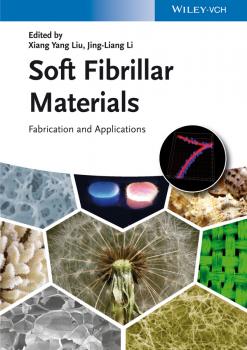Прочая образовательная литература
Различные книги в жанре Прочая образовательная литератураPhotochemistry and Photophysics. Concepts, Research, Applications
This textbook covers the spectrum from basic concepts of photochemistry and photophysics to selected examples of current applications and research. Clearly structured, the first part of the text discusses the formation, properties and reactivity of excited states of inorganic and organic molecules and supramolecular species, as well as experimental techniques. The second part focuses on the photochemical and photophysical processes in nature and artificial systems, using a wealth of examples taken from applications in nature, industry and current research fields, ranging from natural photosynthesis, to photomedicine, polymerizations, photoprotection of materials, holography, luminescence sensors, energy conversion, and storage and sustainability issues. Written by an excellent author team combining scientific experience with didactical writing skills, this is the definitive answer to the needs of students, lecturers and researchers alike going into this interdisciplinary and fast growing field.
Physical Chemistry of Polyelectrolyte Solutions
The Advances in Chemical Physics series provides the chemical physics field with a forum for critical, authoritative evaluations of advances in every area of the discipline. This volume explores topics from Thermodynamic Properties of Polyelectrolyte Solutions to ion-binding of polyelectrolytes. The book features: The only series of volumes available that presents the cutting edge of research in chemical physics Contributions from experts in this field of research Representative cross-section of research that questions established thinking on chemical solutions An editorial framework that makes the book an excellent supplement to an advanced graduate class in physical chemistry or chemical physics
Organic Structures from 2D NMR Spectra
The derivation of structural information from spectroscopic data is now an integral part of organic chemistry courses at all Universities. Over recent years, a number of powerful two-dimensional NMR techniques (e.g. HSQC, HMBC, TOCSY, COSY and NOESY) have been developed and these have vastly expanded the amount of structural information that can be obtained by NMR spectroscopy. Improvements in NMR instrumentation now mean that 2D NMR spectra are routinely (and sometimes automatically) acquired during the identification and characterisation of organic compounds. Organic Structures from 2D NMR Spectra is a carefully chosen set of more than 60 structural problems employing 2D-NMR spectroscopy. The problems are graded to develop and consolidate a student’s understanding of 2D NMR spectroscopy. There are many easy problems at the beginning of the collection, to build confidence and demonstrate the basic principles from which structural information can be extracted using 2D NMR. The accompanying text is very descriptive and focussed on explaining the underlying theory at the most appropriate level to sufficiently tackle the problems. Organic Structures from 2D NMR Spectra Is a graded series of about 60 problems in 2D NMR spectroscopy that assumes a basic knowledge of organic chemistry and a basic knowledge of one-dimensional NMR spectroscopy Incorporates the basic theory behind 2D NMR and those common 2D NMR experiments that have proved most useful in solving structural problems in organic chemistry Focuses on the most common 2D NMR techniques – including COSY, NOESY, HMBC, TOCSY, CH-Correlation and multiplicity-edited C-H Correlation. Incorporates several examples containing the heteronuclei 31P, 15N and 19F Organic Structures from 2D NMR Spectra is a logical follow-on from the highly successful “Organic Structures from Spectra” which is now in its fifth edition. The book will be invaluable for students of Chemistry, Pharmacy, Biochemistry and those taking courses in Organic Chemistry. Also available: Instructors Guide and Solutions Manual to Organic Structures from 2D NMR Spectra
Robust Adaptive Dynamic Programming
A comprehensive look at state-of-the-art ADP theory and real-world applications This book fills a gap in the literature by providing a theoretical framework for integrating techniques from adaptive dynamic programming (ADP) and modern nonlinear control to address data-driven optimal control design challenges arising from both parametric and dynamic uncertainties. Traditional model-based approaches leave much to be desired when addressing the challenges posed by the ever-increasing complexity of real-world engineering systems. An alternative which has received much interest in recent years are biologically-inspired approaches, primarily RADP. Despite their growing popularity worldwide, until now books on ADP have focused nearly exclusively on analysis and design, with scant consideration given to how it can be applied to address robustness issues, a new challenge arising from dynamic uncertainties encountered in common engineering problems. Robust Adaptive Dynamic Programming zeros in on the practical concerns of engineers. The authors develop RADP theory from linear systems to partially-linear, large-scale, and completely nonlinear systems. They provide in-depth coverage of state-of-the-art applications in power systems, supplemented with numerous real-world examples implemented in MATLAB. They also explore fascinating reverse engineering topics, such how ADP theory can be applied to the study of the human brain and cognition. In addition, the book: Covers the latest developments in RADP theory and applications for solving a range of systems’ complexity problems Explores multiple real-world implementations in power systems with illustrative examples backed up by reusable MATLAB code and Simulink block sets Provides an overview of nonlinear control, machine learning, and dynamic control Features discussions of novel applications for RADP theory, including an entire chapter on how it can be used as a computational mechanism of human movement control Robust Adaptive Dynamic Programming is both a valuable working resource and an intriguing exploration of contemporary ADP theory and applications for practicing engineers and advanced students in systems theory, control engineering, computer science, and applied mathematics.
Active Disturbance Rejection Control for Nonlinear Systems. An Introduction
A concise, in-depth introduction to active disturbance rejection control theory for nonlinear systems, with numerical simulations and clearly worked out equations Provides the fundamental, theoretical foundation for applications of active disturbance rejection control Features numerical simulations and clearly worked out equations Highlights the advantages of active disturbance rejection control, including small overshooting, fast convergence, and energy savings
Robust Control. Theory and Applications
Comprehensive and up to date coverage of robust control theory and its application • Presented in a well-planned and logical way • Written by a respected leading author, with extensive experience in robust control • Accompanying website provides solutions manual and other supplementary material
Dynamic Covalent Chemistry. Principles, Reactions, and Applications
The first and only exhaustive review of the theory, thermodynamic fundamentals, mechanisms, and design principles of dynamic covalent systems Dynamic Covalent Chemistry: Principles, Reactions, and Applications presents a comprehensive review of the theory, thermodynamic fundamentals, mechanisms, and design principles of dynamic covalent systems. It features contributions from a team of international scientists, grouped into three main sections covering the principles of dynamic covalent chemistry, types of dynamic covalent chemical reactions, and the latest applications of dynamic covalent chemistry (DCvC) across an array of fields. The past decade has seen tremendous progress in (DCvC) research and industrial applications. The great synthetic power and reversible nature of this chemistry has enabled the development of a variety of functional molecular systems and materials for a broad range of applications in organic synthesis, materials development, nanotechnology, drug discovery, and biotechnology. Yet, until now, there have been no authoritative references devoted exclusively to this powerful synthetic tool, its current applications, and the most promising directions for future development. Dynamic Covalent Chemistry: Principles, Reactions, and Applications fills the yawning gap in the world literature with comprehensive coverage of: The energy landscape, the importance of reversibility, enthalpy vs. entropy, and reaction kinetics Single-type, multi-type, and non-covalent reactions, with a focus on the advantages and disadvantages of each reaction type Dynamic covalent assembly of discrete molecular architectures, responsive polymer synthesis, and drug discovery Important emerging applications of dynamic covalent chemistry in nanotechnology, including both material- and bio-oriented directions Real-world examples describing a wide range of industrial applications for organic synthesis, functional materials development, nanotechnology, drug delivery and more Dynamic Covalent Chemistry: Principles, Reactions, and Applications is must-reading for researchers and chemists working in dynamic covalent chemistry and supramolecular chemistry. It will also be of value to academic researchers and advanced students interested in applying the principles of (DCvC) in organic synthesis, functional materials development, nanotechnology, drug discovery, and chemical biology.
Distributed Model Predictive Control for Plant-Wide Systems
A comprehensive examination of DMPC theory and its technological applications • A comprehensive examination of DMPC theory and its technological applications from basic through to advanced level • A systematic introduction to DMPC technology providing classic DMPC coordination strategies, analysis of their performance, and design methods for both unconstraint and constraint systems • Includes the system partition methods, coordination strategies, the performance analysis and how to design stabilized DMPC under different coordination strategies • Presents useful theories and technologies which can be used in many different industrial fields, such as the metallurgical process and high speed transport, helping readers to grasp the procedure of using the DMPC • Reflects the authors’ combined research in the area, providing a wealth of and current and background information
Introduction to Impact Dynamics
Fundamental guidance—including concepts, models, and methodology—for better understanding the dynamic behavior of materials and for designing for objects and structures under impact or intensive dynamic loading This book introduces readers to the dynamic response of structures with important emphasis on the material behavior under dynamic loadings. It utilizes theoretical modelling and analytical methods in order to provide readers with insight into the various phenomena. The content of the book is an introduction to the fundamental aspects, which underpin many important industrial areas. These areas include the safety of various transportation systems and a range of different structures when subjected to various impact and dynamic loadings, including terrorist attacks. Presented in three parts—Stress Waves in Solids, Dynamic Behaviors of Materials Under High Strain Rate, and Dynamic Response of Structures to Impact and Pulse Loading—Introduction to Impact Dynamics covers elastic waves, rate dependent behaviors of materials, effects of tensile force, inertial effects, and more. The book also features numerous case studies to aid in facilitating learning. The strength of the book is its clarity, balanced coverage, and practical examples, which allow students to learn the overall knowledge of impact dynamics in a limited time whilst directing them to explore more advanced technical knowledge and skills. Considers both the dynamic behavior of materials and stress waves, and the dynamic structural response and energy absorption, emphasizing the interaction between material behavior and the structural response Provides a comprehensive description of the phenomenon of impact of structures, containing both fundamental issues of wave propagation and constitutive relation of materials, and the dynamic response of structures under impact loads Based on the authors’ research and teaching experience as well as updated developments in the field Introduction to Impact Dynamics is the perfect textbook for graduate and postgraduate students, and will work as a reference for engineers in the fields of solid mechanics, automotive design, aerospace, mechanical, nuclear, marine, and defense.
Soft Fibrillar Materials. Fabrication and Applications
As one of the most important classes of soft materials, supramolecular materials are of a mixture of networks of molecular chains/fibrils and a liquid. These self-assembled fibrous/ molecular architectures exhibit various functionalities, ie. superhydrophobicity or superior mechanical strength, etc. and consist of the controllable structures. They can be functioned via micro/nano engineering, to have some particular added functions, ie. emission materials, tissue engineering scaffolds, bio imaging and sensing materials etc. They have therefore found broad applications in photography, cosmetics, food and petroleum industries and not the least in the biomedical sector where there is strong interest in these materials as drug delivery agents. The book covers the most important soft functional materials, including small molecule physical gels, silkworm silk and spider silk fibers and functional fibers, with respect both to the fundamentals and to development and engineering methods. It provides the reader with the necessary knowledge on the chemical and physical formation mechanisms of these materials and demonstrates that one can rationally design and tune the fibrillar networks so that the resulting materials exhibit the desired functionalities. This work is a must-have for all Materials Scientists, Polymer Chemists, Condensed Matter Physicists, and Biotechnologists working in this interdisciplinary field.









